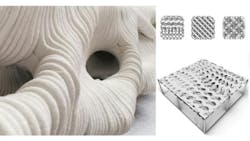Biomimicry Research Leads To Recognition, Sustainability
Shu Yang, Joseph Bordogna Professor and Chair of Materials Science and Engineering at the University of Pennsylvania, has been named the Penn Center for Innovation Inventor of the Year for her groundbreaking research in biomimicry. Through biomimicry, Yang draws inspiration from natural shapes and life forms to engineer solutions in agriculture, building cooling and heating, and reversible adhesives. Her approach starts with fundamental changes that lead to scalable and impactful products. Yang utilizes kirigami, an Asian art of cutting and folding materials similar to origami, to mimic nature's link between structure and function. For instance, she has developed kirigami water collectors that passively pull water from the air for various applications, including wood desiccation and food drying.
Funded by $2.4 million from the DOE, Yang is working with Masoud Akbarzadeh, assistant professor of architecture in the Weitzman School of Design and director of the Polyhedral Structures Laboratory, to produce 3D-printed concrete with a porous design that allows for this building material itself to pull carbon dioxide out of the air.
“Cement is the third largest industrial source of pollution,” says Yang. “Producing one ton of cement contributes over 1,300 pounds of carbon dioxide as well as the release of noxious gasses including sulfur dioxide, nitrogen oxide and carbon monoxide into the air. Our porous cement slab design conserves up to 60% of the material needed to make the structure and every 10 pounds of printed concrete structure has the potential to pull 0.9 pounds of carbon dioxide from the environment.”
